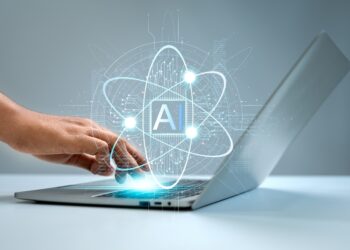How do you view the current IoT market, and what are the key drivers?
The importance of IoT has grown significantly in recent years, especially since the pandemic, which heightened the demand for contactless technology and connected devices. Over the past two years, we’ve seen various initiatives underlining IoT’s critical role across industries. For instance, nanotechnology has made sensors cheaper and more accessible, which is essential for widespread IoT adoption. Emerging technologies like 5G, cloud computing, edge computing, and nanotechnology have all contributed to this growth, making IoT more practical and affordable.
There’s also a strong focus on digital twins, where IoT plays a vital role in replicating physical environments. Digital twins rely on data from numerous sensors and devices, enabling organisations to model real-time applications digitally.
Government support is another major factor. Many government initiatives set strategic KPIs around IoT, targeting areas like sustainability, public infrastructure, and autonomous vehicles. By establishing regulations and national frameworks, governments are helping accelerate IoT adoption.
These four elements—emerging tech, digital twins, government regulation, and accessible nanotechnology—are all essential drivers of IoT’s expanding role in today’s market.

What are some of the main challenges facing the IT industry regarding IoT?
Every new technological initiative comes with both technical and business challenges, and IoT is no exception. One of the biggest issues we encounter is legacy infrastructure within organisations. Many have been operating on outdated systems for years, often locked into specific vendors, making it difficult to adopt IoT without moving to an open architecture. This issue is particularly common in sectors like municipalities, transportation, and construction. Companies like Cumulocity are stepping in with device-agnostic platforms that allow integration without needing to overhaul legacy systems.
Another challenge is data privacy, especially with the shift to open and device-agnostic platforms. Open protocols increase connectivity but also expose systems to potential breaches and privacy concerns. Managing these risks becomes as critical as the architecture itself.
The third challenge is cost. Many companies see digital transformation as a costly endeavour, and it’s not always clear how to measure ROI in IoT. How much can IoT save or generate? How does it enhance operations? These questions are often hard to answer, but quantifying the benefits is key to overcoming cost concerns.
Lastly, scalability is essential for IoT platforms. Organisations need visibility across all departments, not just one or two. Platforms like Cumulocity offer scalability, which helps aggregate data from multiple sources and democratise it for business users, not just technical teams. This scalability is vital for widespread IoT adoption and helps organisations monetise data in the long run.
How is IoT contributing to sustainability and the rise of smart cities?
IoT is central to sustainability and smart city initiatives. It enables real-time data collection from sensors and devices, allowing cities and industries to optimise operations and reduce waste. For instance, IoT plays a significant role in waste management, where sensors monitor bins, helping reduce emissions by avoiding unnecessary chemical reactions that harm the environment. Another example is traffic and parking management, which IoT enhances by reducing congestion and, consequently, carbon emissions, benefiting both the environment and public well-being.
In the industrial sector, IoT boosts machine efficiency, directly cutting energy use and contributing to sustainability. Efficient machinery leads to higher productivity with less energy consumption, a crucial factor in reducing environmental impact.
Smart cities are also evolving with IoT at their core. In regions like the UAE and Saudi Arabia, initiatives such as Neom and the Red Sea projects are setting the bar for intelligent urban development. These cities leverage IoT to build infrastructures and services that are not only smart but increasingly intelligent with the integration of AI. Here, IoT data fuels AI, which then predicts potential failures in manufacturing or other sectors, fostering proactive, sustainable practices. For example, Cumulocity IoT has been adopted in various smart city initiatives, such as Neom and Red Sea, and supports projects like UAE’s Ministry of Interior’s fire prevention efforts, all of which contribute to a more sustainable and resilient urban environment.










Discussion about this post